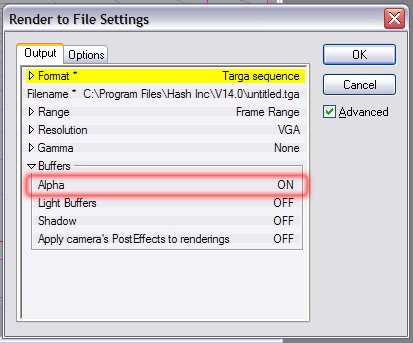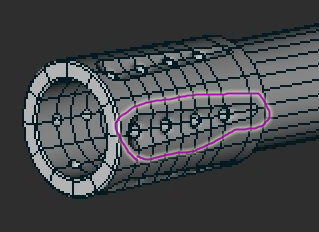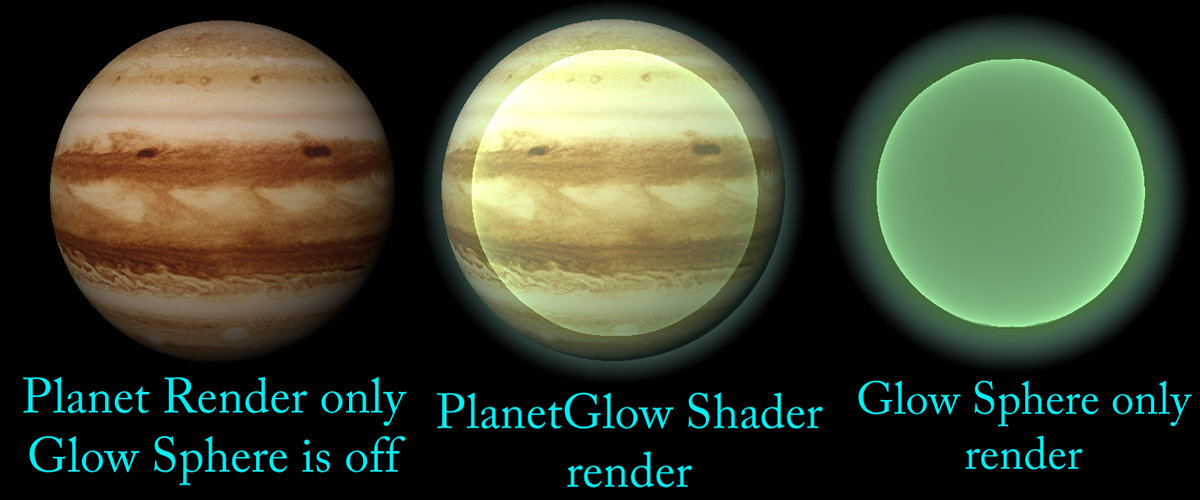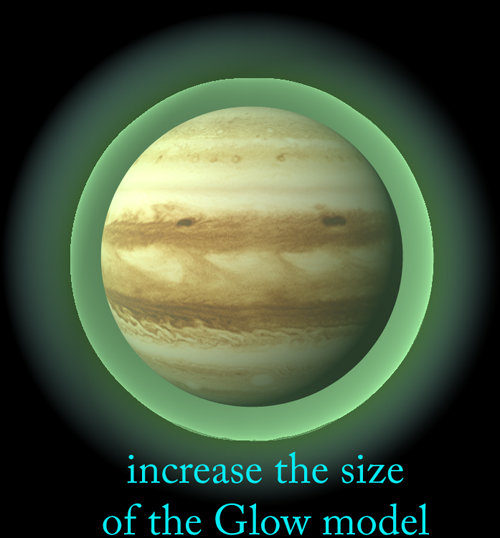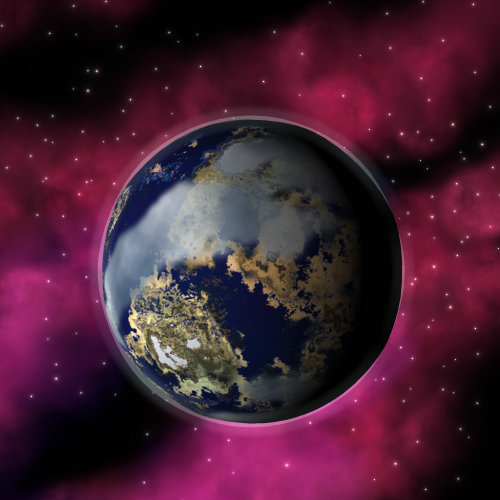
jpappas
Hash Fellow-
Posts
476 -
Joined
-
Last visited
Content Type
Profiles
Forums
Events
Everything posted by jpappas
-
For A:M versions that need the CD, it only checks the CD when the program first starts up, once started you can remove the CD. It shouldn't be running slower in anyway, unless you possibly have a slower CD drive and you access the CD for the Data folder (containing the included models, materials, etc..) If this is the case you can easily copy the data folder to your hard drive. You could also upgrade to A:M version 15, only costs $50. This version runs without the CD and is only runable on the computer you install it to. -Jim
-
phatso, I always thought the advantage of adding Lights directly into a model were more evident in cases where the light was an intrinsic part of the model, like a car's headlights, or the beam from a flashlight, or a large spaceship with lights around it's hull. In these cases it seems easier to add those lights right in the Model window. I mean, you can do these type of lights in a Chor and use Constraints to tie them to the model, but it seems like an extra complication. Otherwise I totally agree with you, that if you're aim is to actually light a model then stick with using Lights in the Chor only. -Jim
-
2 issues, need some insight (Odd colors and Glow)
jpappas replied to Rampage0007's topic in New Users
To even take a guess we'll need much more information, such as: 1. are there any keyframes on anything for those frames? (maybe the Spec. intensity got keyed, or a Light, etc..) 2. is the camera moving in these two examples or is it still? 3. are you rendering with MultiPass? 4. can you save a copy of the scene and start removing things one at a time and see if you can break it down to a simple example where it still happens? 5. does it only happen when you render to file or also when you Quick Render? -Jim -
Largento, I didn't realize Barry's tutorials didn't cover weighting - but do they cover fan bones? That's another area that I don't seem to find many tutorials on. Colin talks about them a little in the Cooper tutorial and there's some basic tutorials that show a fan bone applied to a simple cylinder, but I haven't seen a tutorial that sets up a fan bone on something like a shoulder or hip, and goes one step at a time. thanks! -Jim
-
Iron Butterfly and the Lorentz Attractor
jpappas replied to DeeJayEss's topic in Work In Progress / Sweatbox
DeeJayEss, I really like this, nice job! I loved that dynamic camera view when it tracks behind the butterfly, and also the way you've built banking into the turns (by the way, did you use an expression for that too?) The change in smoke color and showing the x/y/z grid - very cool! I'm curious to see what additions you'll make in the next version. -Jim -
hi, Tech Talk #3 "Dynamic Constraints" is all about chains. Check it out and see if it helps: http://www.hash.com/forums/index.php?showtopic=13249 -Jim
-
Hi, TGA files support Alpha channels and usually in A:M that option is on by default, so that may be the reason, make sure to turn this option off in the Render to File Settings. -Jim
-
Hi, This is one of the better sites for free-to-use texture maps. There's a limit to how many you can download each day. http://www.cgtextures.com/ -Jim
-
Luuk, Could you describe the current payment system? It looks like we give you our email, then a day later you email back an invoice? How is payment made with this invoice? thanks! -Jim
-
Stian, Holy cow! I figured you used some automated method, like some magical use of the Duplicator wizard, or Sweeper. To stitch all those in by hand - that's amazing. -Jim
-
Hi Stian, I was going to suggest resevoir, but Wikipedia has a diagram and says it's the hopper. BTW, I enjoy watching the progress and seeing the updates, very nice! Could we ask questions just about one area? I'm curious about how you did the oval indentations on the muzzle. I think if I were modelling this I would have been lazy and used a displacement map. If I were to guess, I'd say you created the oval indentation shape first, then added the little screw heads, then arranged and copied six of these into a circle, but I'm not sure what method you used to merge these into the cylinder that makes up the muzzle, other than doing it all by hand. I would love to hear how you did this part. -Jim
-
Hi Camillo, There's two ways to do this, it's a bit tricky at first since each method thinks outside the box. But both methods are in the forum here somewhere too, try to search for 'chain'. I'll just do a real quick summary below because I'm sure to get some steps wrong without reviewing step by step. Method #1 - the distorted circle: In general, the idea is you make a model that's a perfect circle shape with the chain pieces arranged along the edge of the circle. You add two bones in the middle, one just for rotating, the other attached to all the CPs in the chain, one bone has to be a parent of the other, I forget which. Then you create an Action, and a distortion object, and you distort this circle into your chain shape. Now in the Chor you add the circle chain model, drop the Action on it to distort it into a chain shape, then just rotate the rotate bone, it will rotate like a simple circle but constrain itself to the distorted chain shape. This method is the easiest, but has the problem that your chain links will get slightly distorted as they go around corners, so it works better for belts than chains. Method #2 - the double path: Have each chain link follow a path in the shape of the chain. The trick here is you need to have the path twice as long as normal, so if your path is a circle, have the path wrap itself around the circle shape twice, I separate them by a pixel or two so you can zoom in and see each section of spline as needed. This way, each chain link you contrain to the path can complete the path using only 50% Ease in an Action instead of 100%. This gives you the room to add all the chain links without bunching up at the end (which is what happens when you have to use 100% Ease to get to the end of the chain). Again, this is just an overview! Try digging into each discussion on the forum and if you are stuck, I'll try to help further. -Jim
-
Ramon, Looks like you're on your way! Nancy, Using this for clouds, what a great idea! With some transparency it could work. -Jim
-
heyVern, We must both be geniuses! Because when I was learning about subframe techniques it was your thread (and that other MUFOOF one) that got me to finally understand it. And wow! What a powerful feature, it adds a whole new dimension to A:M. -Jim
-
heyVern, Ramon, I've only been skimming through this so forgive me if this is on the wrong track, but if you want to blur just an otherwise normal object, the method that pops into my mind would be a subframe motion blur applied with an Action, like the airplane propellar method described awhile back somewhere in the forum. You make an Action of however many frames where you move the object back and forth, then when you apply the Action to the object, set it's Cycle Length to a subframe amount, like 0.1. Then you have to use MultiPass and Motion Blur when you render. This allows you to render normally without compositing and for the object in question, every frame rendered will have the complete motion of that Actoin, and with Motion Blur, will show it blurred. -Jim
-
bighop, Think of Rigs like food at a buffet table, there are many choices and you can use whichever you like and whichever works for you. The Squetch rig is like a new tasty entre that many top chefs have worked on and lot's of folks love it, but there's still some who like the 2001, or the TSM and still many who make their own rig from scratch (like bringing their own food to the table, Ok, enough with the food analogy, I think you probably get the idea!) Any time spent on any rig is time well spent, the basic concepts are used from rig to rig. There's plenty of information about Squetch in the Rig subforum including what versions of A:M it can be used on. Hope this makes some sense! -Jim
-
If you want to avoid decalling at this stage, I think the easiest way would be go get a good texture map of a weathered material, you probably can find one for old bone in fact, and import it in your Images folder. Then create a New Material, change it to BitMapPlus, then in the options for BitMapPlus, select your old bone texture map as the image. Then just drag and drop this new Material onto your model. BitMapPlus will wrap this texture map around your model. To add bumps or displacement effects, make a grayscale version of your texture map (keeping in mind that darker areas will look pushed in and lighter areas will look bumped out), then create another new Material, change it to BitMapPlus again, but this time select your grayscale map as the image. Then in the Properties of the new Material, give the Bump Percent a value for a bump map effect or Displace Percent for a displacement map (start at 100% then adjust it based on what you want). Just drag and drop this Material on the model too. The first one will handle the color, and this second one will handle the bump. Hope this helps! -Jim
-
Also, using MultiPass makes this even more apparent, when you use multipass A:M jitters the light in each pass based on the light width, if light width=0, there will be no jitter. PS. and yes, jitter is the funny word for today! -Jim
-
All the library data including Thom is on each A:M CD - you can either copy it back to your hard drive or just use it from the CD. On the CD, look in the Data folder. -Jim
-
Hi, My guess is that the CPs for each part of the flower were not attached to the corresponding bones. In Bones mode, just select a bone, then select the CPs you want attached to it. Those CPs will have the same color as the bone once you do this, and each bone will have it's own color - making it easier to see what's going on. When done, exit Bones mode and go into an Action or a Pose, make sure you are in Skeleton mode, then try moving the bones -- the CPs associated with them should move with them. -Jim
-
Hi, When you're in the CHOR and create a Path Constraint and get the eye-dropper, then you shift-select and this will allow you to select existing splines from models in the CHOR as the path. -Jim
-
Hi Julian, I've tried using the PlanetGlow Shader on a basic planet. I just want to learn how to start using it. I'm actually seeing a glow so I'm doing better than when I first tried. It looks like there's an inner glow that's really bright and seems to be showing up over the planet model, even though the Glow model is larger than the planet. You get such great results with it, I was hoping you could perhaps look over my steps and make suggestions? Here's how I tried to use it: 1. create a 16 cross-section sphere for the planet, and give it a texture 2. create another 16 cross-section sphere for the Glow 3. create a new Material, called it Glow, gave it a Diffuse Color and set it's Diffuse Render Shader to Planet Glow 4. choose colors for the Lower and Higher Altitude Color of Planet Glow in the Glow Material 5. dropped the Glow Material on my Glow model 6. on Glow Model, turned off the Cast Reflections, Cast Shadows, Receive Shadows and Cast Occlusion 7. on Glow Model, set Transparency to 92% 8. put Planet model in CHOR, then put Glow model in CHOR and size it to cover the Planet model (how much larger should the glow model be?) 9. set up Key Light as Sun pointing at Planet 10. in Render Options, turned on Plugin Shaders Well, here's a few pictures to show the results. Again, that inner glow sphere seems to be the problem. These renders were in V14 using MultiPass 1 Pass. I see in Yves' sample project he uses a Spherical Combiner Material with Planet Glow set on two of the Attributes. Do you also use a Combiner with multiple Attributes that use the Shader? I assume this gives a better look? In the second picture I increased the size of the Glow Model. Any help is appreciated! -Jim
-
Here is some information from it's creator, Yves Poissant. Note the warning about antialiasing, I think this means MultiPass should be used when trying this. The one time I tried this I was using A-buffer and indeed, the glow rendered as a solid. http://www.ypoart.com/Downloads/Planet-Glow.htm -Jim
-
If you have Photoshop, an easy and fun way to generate planet textures is with Flaming Pear's "Lunar Cell" plugin, only $20. The default setting makes a picture of a planet, but change the output to Image Map and it generates Spherical Maps for use in A:M, including color, bump and cloud mask maps. -Jim
-
Hi, This is great! I've seen many of these nice A:M cars but this will be the first car modelling tutorial I can recall. I can't wait to see it. I got confused by your Poll, I was trying to pick a car from the pictures you showed -- but then realized you're showing examples of cars you already made. Can you post photos of the cars you'd like us to choose from in the Poll? thx! -Jim
